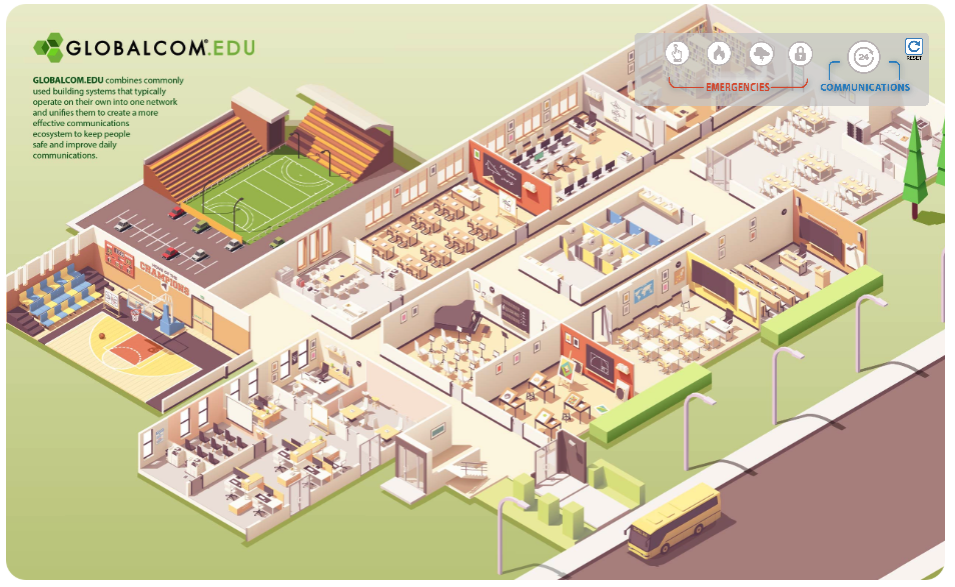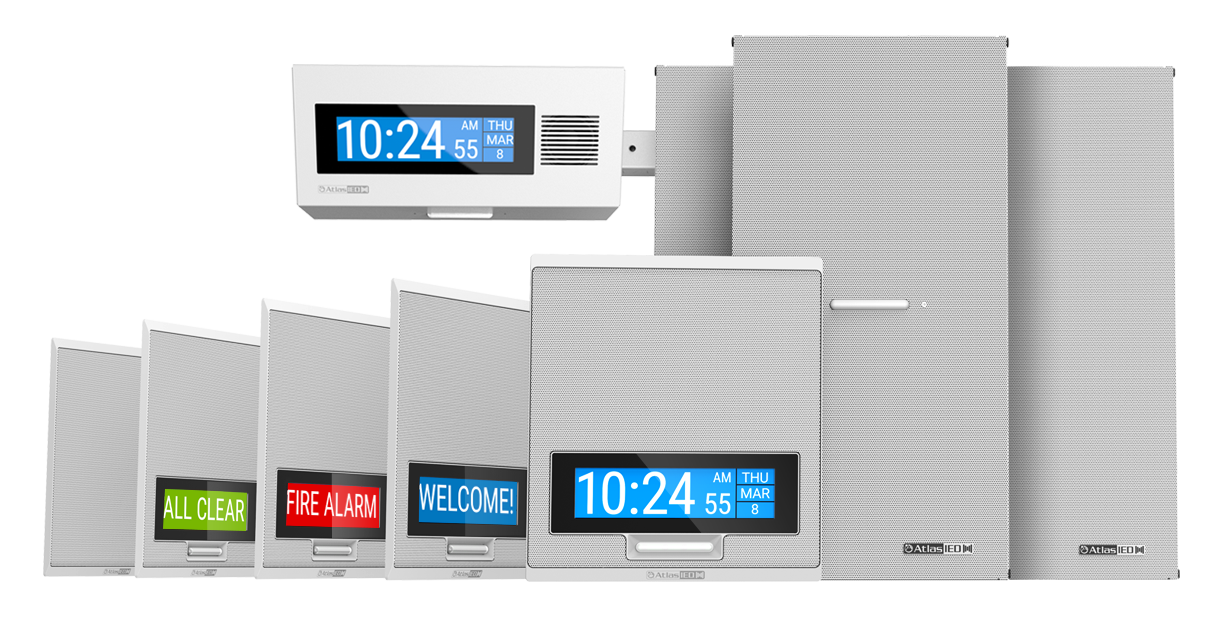Masks, disinfectant, and social distancing have become the standard protocols to help stop the spread of the coronavirus. Hospitals, hotels, restaurants, and retail establishments worldwide have adopted these strategies. Soon, schools will follow suit, implementing similar protective measures as K-12 students and staff return for the 2020—21 academic year. But as the CDC suggests, there’s more that schools can do to keep everyone safe while maintaining some sense of normalcy. One of the CDC’s top recommendations to school administrators is enhancing campus communications systems. It’s a step that makes a lot of sense, as students, staff, parents, and entire communities rely on quick, reliable dissemination of information to successfully adapt to new guidelines, policies, and procedures.
Broadcast Routine Reminders
For example, automated audible announcements can remind students to practice safe distancing and to wash their hands. School administrators can play these pre-recorded reminders at scheduled times of the day and throughout the entire school or in certain high-use “zones” like the lunchroom, hallways, and gymnasium.
Issue New Safety Alerts
When necessary, administrators can modify routine announcements via GLOBALCOM®.EDU software and issue alerts on the fly. Alerts can advise students to exit the school through a different door or to stay off certain playground equipment. Moreover, schools can react quickly to new federal, state, and local COVID mandates by adding new alerts, announcements, and messages to the system.

Indicate One-Way Hallways and Designated Seating
Routine reminders and instant alerts are important to maintain order and safety post-pandemic, but per the CDC, proper communications should also help guide students to and from busses and building entrances, between classrooms, and to specific desks and workstations to ensure adequate social distancing. IP Endpoints can communicate these instructions in a manner that’s universally understood by the entire student body. Children with hearing impairments or who are unable to read, for example, can identify an illuminated green light on IP Endpoints as “go,” and refer to the visual guides along newly designated one-way hallways and sidewalks. Scrolling text, arrows, and flashers can be used as additional visual cues to ensure comprehension and compliance.

Notify Classrooms of Staggered Recess, Lunch, and Departure Times
Other audible and visual alerts can notify students and teachers when their classrooms have been cleared for lunch and recess, and lead parents and bus drivers through drop-off and pick-up procedures. IP Endpoints can indicate safe distances to sit apart during classroom instruction, assemblies, and after-school events, and administrators can broadcast school bells through IP Endpoints by grade and classroom to limit the number of people in the hallways.
Extend Communications to Supplementary Classrooms
Smaller classroom sizes promote social distancing, and for some districts this requires the addition of temporary outbuildings. Advanced IP-based communications systems or temporary audio systems extend easily to these supplemental classrooms for campus-wide coverage of audible and visual messaging. Easy to set up and tear down, temporary audio (also known as temporary PA) systems are rugged enough to be quickly moved or stowed away when not in use.

Amplify Learning with Clear and Intelligible Instruction
The roadmap for higher ed during the pandemic is uncertain, and many schools are developing new health and safety measures to try to reduce the potential for virus spread, while still offering a high level of student and instructor engagement. Hybridization of the learning experience is key for most campuses, thanks to a variety of technologies that can be employed to facilitate safe and effective on-campus instruction and remote e-learning. No matter which approach a campus or student follows, clear, intelligible communication is necessary. Masks worn by instructors can muffle speech, making it more difficult for both in-classroom and remote students to hear presentations. Voice lift microphone systems, like Atlas Learn, mitigate this issue by appropriately amplifying the sound for hybrid teaching and learning.
Coping with the Situation
Communications systems have always been a vital part of K-12 school operations. They’ve become even more critical post-COVID as administrators deal with unprecedented challenges and develop completely new roadmaps for the upcoming school year. Perfectly aligned to help K-12 schools execute new messaging strategies are AtlasIED’s IP Endpoints, portable public address systems, and GLOBALCOM®.EDU technology. Easy to integrate with existing communications platforms, flexible, and customizable, they help administrators, staff, and students adapt to COVID19 safety guidelines and get back to teaching in a traditional classroom and campus-wide learning environment.


